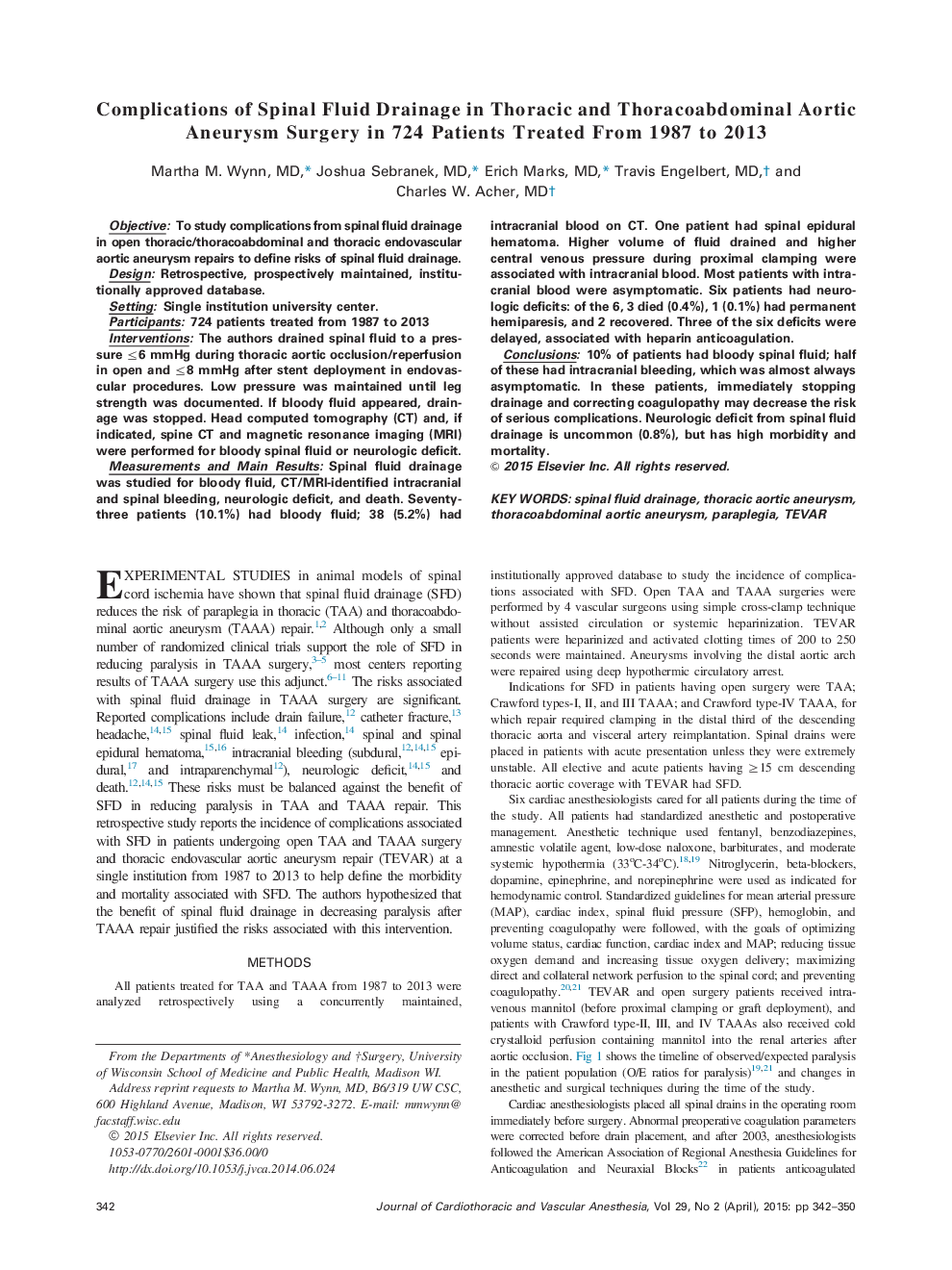| کد مقاله | کد نشریه | سال انتشار | مقاله انگلیسی | نسخه تمام متن |
|---|---|---|---|---|
| 2758811 | 1150141 | 2015 | 9 صفحه PDF | دانلود رایگان |

ObjectiveTo study complications from spinal fluid drainage in open thoracic/thoracoabdominal and thoracic endovascular aortic aneurysm repairs to define risks of spinal fluid drainage.DesignRetrospective, prospectively maintained, institutionally approved database.SettingSingle institution university center.Participants724 patients treated from 1987 to 2013InterventionsThe authors drained spinal fluid to a pressure≤6 mmHg during thoracic aortic occlusion/reperfusion in open and≤8 mmHg after stent deployment in endovascular procedures. Low pressure was maintained until leg strength was documented. If bloody fluid appeared, drainage was stopped. Head computed tomography (CT) and, if indicated, spine CT and magnetic resonance imaging (MRI) were performed for bloody spinal fluid or neurologic deficit.Measurements and Main ResultsSpinal fluid drainage was studied for bloody fluid, CT/MRI-identified intracranial and spinal bleeding, neurologic deficit, and death. Seventy-three patients (10.1%) had bloody fluid; 38 (5.2%) had intracranial blood on CT. One patient had spinal epidural hematoma. Higher volume of fluid drained and higher central venous pressure during proximal clamping were associated with intracranial blood. Most patients with intracranial blood were asymptomatic. Six patients had neurologic deficits: of the 6, 3 died (0.4%), 1 (0.1%) had permanent hemiparesis, and 2 recovered. Three of the six deficits were delayed, associated with heparin anticoagulation.Conclusions10% of patients had bloody spinal fluid; half of these had intracranial bleeding, which was almost always asymptomatic. In these patients, immediately stopping drainage and correcting coagulopathy may decrease the risk of serious complications. Neurologic deficit from spinal fluid drainage is uncommon (0.8%), but has high morbidity and mortality.
Journal: Journal of Cardiothoracic and Vascular Anesthesia - Volume 29, Issue 2, April 2015, Pages 342–350